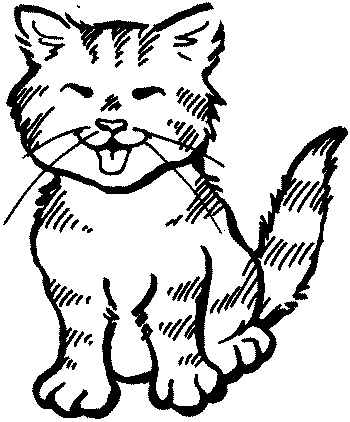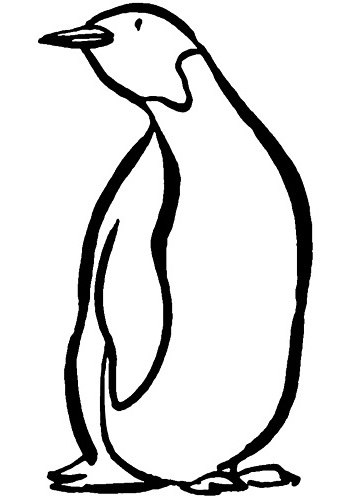

Chacarera of the Penguin
Author: Mónica RODRÍGUEZ DEL REY
School holidays have that endearing combination of creativity, excitement and ingenuity, and it was no exception in a suburb of Buenos Aires.
The school principal suggested to the students (or, rather, informed them) that the festival to end the school year would have students representing the different regions of Argentina through its music or dances. All present applauded the idea. Right then and there the principal specified that the regions would not be by choice, but by lot.
Miss Silvia, the 5th grade teacher, appeared, carrying a box. A student from each grade would reach into the box and pick a piece of paper with the name of an area written on it. The first name to be announced was the Chaco plain, in the hands of a student of 1A, followed by Mesopotamia, Cuyo, the Puna. Fifth grade was called and, as Tobias read "Antarctica and South Atlantic Islands" written on the paper, Miss Silvia's hands shook. There was silence all around when Tobias, walking with his head down, rejoined his classmates.
"You could not get another region, dolt?" Nacho asked in anger.
"If they were all inside I could," Tobias said defensively.
"All previously removed by the others," Martin sneered.
"The Pampas was still there," protested Lautaro.
"Why do you blame me?" Tobias said.
"Do you know any music or dance of the South Atlantic?" Matias asked.
The next day, the talk in the classroom was about Antarctica and nothing else. At last, Ariel came to the defense of his classmate Tobias.
"Leave him alone."
"But what are we going to do?" Antonella asked the teacher.
"Tobias drew an area like any other," she replied.
"Yea, the worst!" complained Santiago.
"This discussion does not make any sense," said Miss Silvia. "The region we drew is not the worst and is part of our territory. It is a challenge for 5A and we will solve it as a group."
The students read old textbooks and new ones, the manual of native dances and the Internet. Land forms, flora, fauna, military expeditions, discoveries, bases. All kinds of information about the area in question ‑‑except what they sought.
The days passed, and the rehearsals of the other grades were in full swing. There was no movement or songs in the space allotted to 5A... while a Pericón by 6A was heard from every corner of the school. The murmur of moms in the library, preparing the Indian costumes to represent the Chaco region, was non‑stop. And what about the laughter during the rehearsals of the picaresque Gato or lively Chamame? The
students from 5A were returning from P.E. on a hot Thursday when they heard a Carnavalito being practiced by 3A. 5A's noses were glued to the windows as they watched the spirals formed as part of the dance, and they could not disguise their discouragement at failing to find a way to participate in the forthcoming festivities.
"They're rehearsing and we're doing zilch," complained Matías.
"We're going 'round and 'round with our tails between our legs because we can't," protested Santiago.
"Stop, my friend! Repeat what you just said," interrupted Ariel.
"About the tails between the legs? My grandfather says it and he explained that..."
"I already know what it means."
Then what?"
"I just had an idea. Let's go to the classroom!" said Ariel, walking in a hurry.
His classmates followed him without a clue of what the idea was, yet if it was coming from Ariel, it was sure to be a very clever one.
"We danced Chacarera of the Cats while in 3rd grade with Miss Noemi."
"That was for July 9, we had top hats and crepe paper tails," Tobias said, smiling.
"Let him speak. Yes, you are talking about the song by Maria Elena Walsh," said Miss Silvia.
"What does Tucumán have to do with Antarctica or the South Islands?" Santiago asked.
"Let's change the lyrics and characters!"
The idea seemed a very good one to Miss Silvia and thought the music teacher could help with the musical arrangements.
"The song speaks of cats that we can change to penguins, and instead of going to Tucumán, they will compete in some base in Antarctica," explained Ariel.
'That's copying," Matias said.
"It is called plagiarism," corrected Daniela.
"Neither ..."
"Maria Elena is gone, but I dare say that she would be happy," smiled Miss Silvia.
"Then let's get this show on the road!" said Ariel.
The Chacarera of the Cats was written on the left side of the blackboard, while the lyrics the students invented were written on the right side. Laughing and cracking funny remarks, a new song to serve their purposes ‑a little crazy but perfectly good‑ came to life..
 |
 |
CHACARERA OF THE CATS Three elegant morrongos Meow meow meow meow All the little mice "For we have information Cautiously, very catlike, But as the contest was They returned shortly, They meowed the news The mice heard the words Lyrics: María Elena Walsh (*) Gato is the Spanish word for cat and also the name of a dance. |
CHACARERA OF THE PENGUINS Three elegant penguins Cue cue, cue cue Albatrosses sat and "A gossiping seal said They invited lady penguins; They traveled south But, as the dances were only Without applause or trophies They were welcomed Lyrics: Classroom 5A |
The day of the party arrived.
They sang with enthusiasm, and everyone from 5A had a part. Although the dancers were six, the other students were the animals in the story. A choir sang the lyrics they had written while a child pointed to a large map of Antarctica and traced the route taken by the penguins to get to the contest at Esperanza Base.
Even the doorman, Carlos, who had followed the vicissitudes of the students, had the idea of helping without them knowing: He chopped discarded white paper plates, hid on top of the stage with the pieces and waited to drop them at the right moment.
Now the only thing needed was the response of the audience.
The students of 5A were finally announced and climbed nervously to the stage. They were rewarded by clapping from the audience, soon exploding as Carlos' "snow flakes" started falling on the stage during their last bow.
NOTE
Some folk dances of Argentina are mentioned in the story.
Chacarera originated in Santiago del Estero and is danced in pairs: The male dancers circle around their female partners, enticing them with foot stomping (zapateo) and handkerchief waving; the handkerchief is used to "embrace" the ladies at the end of the dance.
Gato (cat) is a merry dance from the 1820s. It represents a gentleman courting a lady, trying to win her by tap dancing (zapateo) and performing amazing capers. The lyrics of these pieces are picaresque or humorous (dancers will often stop the music to improvise verses, usually of double meaning).
Chamamé originated in rural northeastern Argentina, an area that attracted numerous Eastern European settlers. These immigrants brought with them European music that merged with local tunes and African rhythms to create the lively dance.
Pericón is very elegant and was danced in the countryside as well as the smart ballrooms of cities during Colonial and Independence days in the 19th century. It was called "dance of four" because this was the minimum of couples needed.
Carnavalito was danced long before the Spanish conquistadors arrived in northwestern Argentina. It is a cheerful collective dance led by a woman (or man) waving a hand‑kerchief, guiding the dancers in a row or formations.
